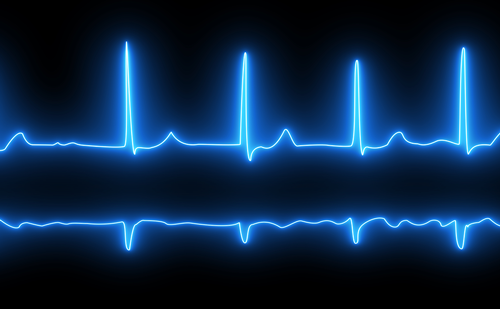Introduction: It is now quite common for patients to be able go home on the same day after their AF ablation. A contributing factor of this is the Proglide Suture-Mediated Closure System which allows quick recovery after large bore venous access (>12F). This study is one of the first to see whether the Proglide device enables early mobilisation after AF ablation.
Objective: We compared outcomes in patients whose vascular access site was closed with the Proglide device with those whose site was closed with the standard Z suture. We looked for any significant differences in ambulation time as well as bleeding outcomes.
Methods: Patients undergoing cryoablation at a tertiary centre for paroxysmal or persistent AF were included in this study. There were 104 participants in total. Pulmonary vein isolation (PVI) was performed using US guidance for access with 14F cryosheath and second 7F sheath. 5 minutes pressure was used at the 7F site. Transeptal puncture was performed and a 28 mm cryoballoon was used. Patients were subsequently transferred to the ward for recovery post sedation and nurse led discharge. Operator preference determined whether a Proglide Closure device was used (PD; Abbott Ltd) or a Z suture (ZS). All patients received protamine for heparin reversal and their usual anticoagulant agent remained uninterrupted. Time to ambulation (TTA) and time to discharge (TTD) was measured. Complications such as bleeding, haematoma and minor ooze were recorded.
Results: The group demographics were largely similar and the mean age was 64 ± 11. 52 (50%) patients had paroxysmal AF. 65 patients were male (64%). 73 (70%) patients received the Z suture whilst 31 (30%) patients were in the PD group. There were 2 haematomas (2.8%) in the ZS group compared with none in the PD group. There was no significant difference between the incidence of minor bleeding between the two groups (PD 3 [9.7%]; ZS 2 [2.7 %]; p=0.155). No major bleeding occurred in either group. The PD group had a significantly shorter mean TTA (3.3 ± 1.1 vs 4.1 ± 1.7 hrs; p=0.025). But there was no significant difference in same-day discharge (PD: 25 [81%] vs ZS: 53 [73%]; p=0.386) and TTD (5.0 ± 3.6 vs 6.1 ± 4.2 hrs; p=0.275) between the two groups. There was 1 patient in the ZS group which complained of groin pain that delayed discharge. This did not occur in the PD group. There were no differences in any incidence of complications after a mean follow up of 2.2 ± 1.4 months.
Conclusion: Relative to the conventional Z suture technique for haemostasis, this study has shown an association between the use of the Proglide closure device and quicker mobilisation times after cryoablation for AF. Groin access complications were infrequent in both groups. This study shows that the Proglide device may contribute to improving patient flow in AF cryoablation.
















